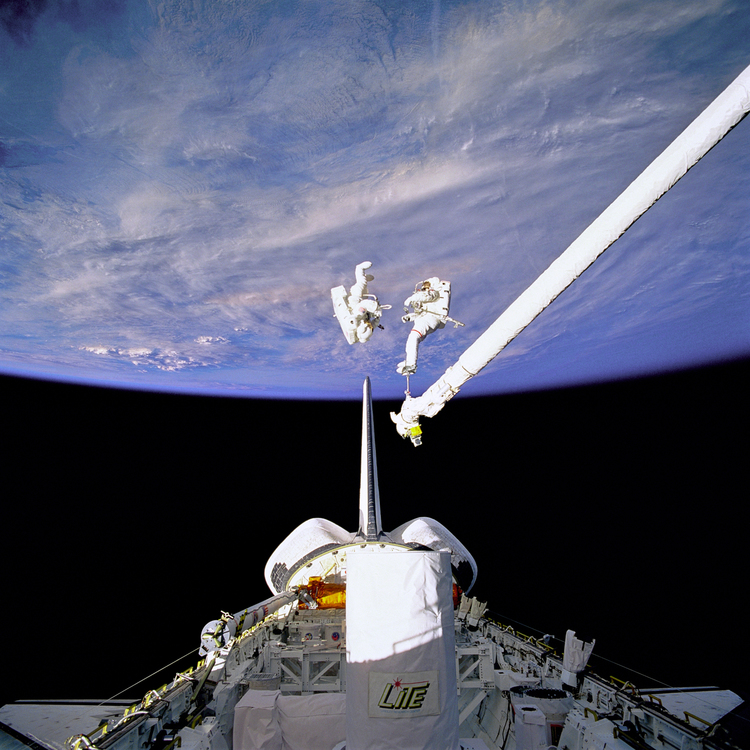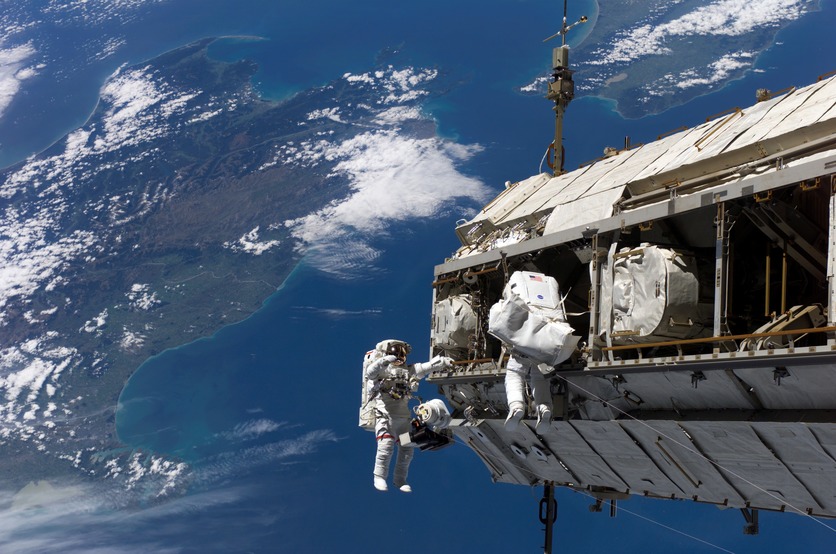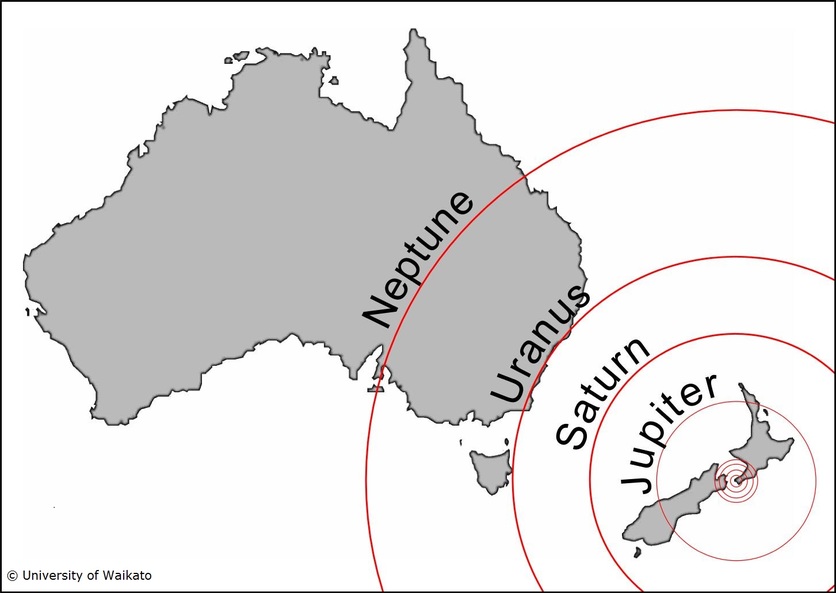Distances in space are really, really big. The Voyager 1 spacecraft is heading out of our Solar System at 62,000 km per hour, but even at that speed, it would take it 77,000 years to reach the nearest star. It would take over a billion years to cross the Milky Way galaxy. And to get to the next galaxy? We need a bigger calculator!
Relating to what we know
Professor Denis Sullivan, an astrophysicist at Victoria University of Wellington, thinks it is important that we get a ‘feel’ for these big distances, even if we can’t visualise them. He finds that it helps to relate big measurements to smaller ones that we already know.
- You know what a kilometre is – you can walk that distance easily.
- You know what 100 km is – that’s how far a car could travel in an hour at the speed limit on a main road.
- Travel more than 100 km above the surface of the Earth, and you’re in space, at the edge of the atmosphere.
- When the Space Shuttle goes into space, it orbits about 700 km above the surface of the Earth – that’s less than the length of the South Island of New Zealand.
- The Moon is 400,000 km away. That’s the same distance as 10 times round the Earth.
Numbers start getting really big when we look at distances from Earth to other planets in our Solar System. It’s 78 million kilometres (78,000,000 km) from Earth to Mars, and it’s 4350 million kilometres (4,350,000,000 km) to Neptune.
Small-scale Solar System
To get an idea of distances inside our Solar System, it helps to reduce everything in size. The Sun is 1,391,980 km across – let’s shrink that to 1 km. We can now shrink the planets, and the distances between them, by the same amount.
The table and map show what we’d get if the Sun was a ball 1 kilometre across in the centre of Wellington.
| Diameter of planet | Distance from Sun | In orbit over |
|---|---|---|
| Mercury 4 m | 40 km | Kapiti and Cook Strait |
| Venus 9 m | 80 km | Masterton and Marlborough Sounds |
| Earth 10 m | 100 km | Nelson and Levin |
| Mars 5 m | 160 km | Wanganui and Kaikoura |
| Jupiter 100 m | 560 km | Great Barrier Island and Dunedin |
| Saturn 90 m | 1030 km | Half way to Australia |
| Uranus 30 m | 2070 km | Eastern edge of Australia |
| Neptune 30 m | 3240 km | Adelaide, South Australia |
Now let’s head to the nearest star outside the Solar System, called Proxima Centauri. This star is 40 trillion kilometres away. Even if we shrank that by the same amount as we shrank our Solar System to fit across New Zealand and Australia, Proxima Centauri would still be over 30 million kilometres away!
Light years
We need a different unit of measurement, because at these distances, kilometres are too small to be much use. One unit for measuring very big distances is the light year. This is the distance that light travels in a year, so 1 light year is about 9,500,000,000,000 km. Using this unit, we say that the star Proxima Centauri is about 4.2 light years away.
Even using this unit, numbers in space get pretty big.
| Distance from Earth | |
|---|---|
| Sirius, brightest star in sky | 8.6 light years |
| Acrux, brightest star in Southern Cross | 321 light years |
| Rigel, brightest star in Orion | 777 light years |
| Centre of our Milky Way galaxy | 27,700 light years |
| Andromeda, nearest large galaxy | 2,900,000 light years |
| Perseus cluster of 500 galaxies | 190,000,000 light years |
| Furthest galaxies seen in the universe | 15,000,000,000 light years |
If we were still using kilometres, the distance to the furthest galaxies seen would be 145,000,000,000,000,000,000,000 km.
Activity idea
In the activity, Shrink the Solar System, students create a scale model of the Solar System to help them understand distances in space.
Useful links
See this monster graphic from the BBC of our Solar System that illustrates just how big space is.
Watch a rapidly increasing real-time odometer showing the distance of Voyager 1 and Voyager 2 from Earth.



